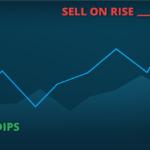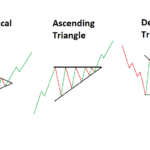In a quantum world, one always wonders what happens in the centre-stretch of an ever-expanding rubber band. Those two edges, firmly held between the fingers of fate, tend to remain constant, while everything in between gets flimsier and flimsier until – in a non-quantum world – the rubber band splits – two independent edges still being held, but two new ones flimsily swinging below.
Where financial markets are concerned, today it is clear that the two edges remain the purely technical versus the purely contemplative, or – if you will and slightly conversely – long-term buy-&-hold versus infinitesimally short-term high-frequency arbitrageSimultaneously buying and selling a specific asset on 2 different markets in order to profit from th....
Day tradingPratique de trading consistant à ouvrir et à fermer des positions le même jour et principalement ... strategies, though loosely reliant upon fundamental indicators, lean more and more towards the technical for two main reasons:
1) day-traders (especially scalpers) have little time to invest in fundamental research and analysis, and
2) more and more technical tools are added to the palette every day, including those that replicate – to the extent that a personal computer can keep up with the super-boxes used by HFT firms – the requirements of scanning the entire markets, then opening and closing a trade in an indescribable fraction of a second.

However, high-frequency trading is a race between providers that today has become so competitive, companies actually pay marketA location or entity where people and entities can negotiate and trade assets of value. data providers and even exchanges for the right to set up their systems geographically closer in order to capitalise on the nano-second lead derived from optic fibre data-moving cable-length.
The absurdity of the situation has led a new and upcoming competitor of both the New York Stock Exchange and the Nasdaq – the Investor’s Exchange (IEX), which was recently approved by the SECThe US Securities & Exchange Commission is the US regulator of financial markets. not only to requote but actually to host IPOs – to actually place a mile-long cableForex slang for the British Pound – US Dollar pair, named after the first trans-Atlantic telegraph... between the closest of its data broadcasters and the closest of its associated brokerages in order to cancel out this kind of advantage that high-frequency firms can provide.
Notwithstanding the above, one sees fundamentalists like Warren Buffet and asks, which is better – long-term buy-&-hold or short-term in-&-out?
Does Technical Analysis Work on Day Trading?
Clearly, at the extreme, technical analysisA technique of forecasting the direction of prices by studying past market behaviour using primarily... works to the extent that trading algorithms are used in high-frequency trading. Sites like Quora quote 3-figure success rate percentages and, of course, the advertising is not far behind. HFT firms invest a lotAn amount or measurement. In forex – a standard unit of 100,000 currency pair units. of money in hardware, and they wouldn’t if it didn’t.

Over the extreme long term, this is also true, since we can discern a very long-term rise in equities and indices that seem to say that the world’s economy is gradually improving, barring calamitous hiccups, such as the Spanish Influenza, the Crash of ’29, of 2008 and – most recently – COVID-19.
However, these too only demonstrate that, even when the economy goes to the dogs, the markets obliviously keep on rising, especially when governments, corporations and their respective institutional minions (read: central banks) dedicate the economy to keeping those markets afloat rather than – as a rational and even slightly moralistic human being would expect – the other way around.
The above is, of course, subject to due diligence: even an avowed technician would not be as callous as to invest in a stock before examining whether the issuing company is viable – fundamental research – or a commodityA tangible good that can be and which has been “commoditized”, i.e. standardized by quality and ... or currencyA financial medium for the exchange of value. In economics, it is the monetary system employed by a ... before checking up if the issuing country is not about to be subsumed by a major regional power.
Consequently, this may not be the best time to invest in the Hong Kong Dollar, for example; conversely – considering the absurdity of the current US administration, China’s experiments with its crypto Renminbi and the fact that more and more international transactions are being closed with the fiat version thereof (all fundamental considerations) – investing in the Chinese currency could be a good idea if it were feasible.

However, given that market cycles seem to exist and that human action is subject to cyclical moods and fears, technical analysis, which seeks to spot these patterns and monetise them, should theoretically prove itself with assets that are subject to the short-term but pre-ordained whims of human reaction to the news cycle.
Day Trading Strategies that Work
A strategy is a set of actions taken with an ultimate goal in mind. Unfortunately, all those strategies one finds in the textbooks will only work in an absolutely efficient marketplace, as defined by Granddaddy Dow. Fishing lines, straddles and so forth do not work if there are insiders trading, shady deals concocting and human frailties dictating.
The only strategies that should work universally are: don’t invest more than you can afford to lose, don’t open a positionAn open trade or transaction. A position can be long (a contract to buy the asset) or short (a contr... without a stop loss, prefer to trade the trend, buy low, sell high, and other basic homilies that shouldn’t really take up space here.
These risk-mitigating strategies that will keep you from going bankrupt overnight. They won’t make you rich any time soon. And since, as a day-trader, you are competing for that same finite kitty funded by a fixed set of losers, there’s only so much to go around. You are competing with the big boys with their ever-bigger computers using – at best – EZComputer’s latest GPU.
Now, I’m not saying that day trading is riskier, necessarily, than longer-term trading, but that – as everything else – it has its place.
Is Day Trading Riskier than Longer-Term Trading?

Well, yes. Of course! But that’s what makes it interesting. Just don’t let it become debilitating.
When day-tradingThe practice of opening and closing positions on the same day, primarily used by speculators., you will only come across “a sure thing” rarely. If you’re about to hang your entire financial activity upon just that, then you probably won’t go far. Like everything else, it should be used in conjunction with long-term trading – as with a retirement fund.
When you open a retirement fund, the fund manager will invest you in a portfolio that is constantly changing: more riskThe level of deviation of past returns and/or losses on an asset from the mean. Usually, the higher ... assets the further you are from retirement, losses covered by the wins of other members. The closer you get to retirement, the sooner you will be needing your funds.
Hence, the manager will shift you into less-risky assets, until the bulk of your portfolio is in boring old T-bills. Obviously, you would never have been able to build up your equity based on government bonds over the long term, and that’s why, when the need was distant, the manager could afford to risk your assets in more dynamic assets – a risk he or you couldn’t afford the day before getting that gold watch.
Likewise, your trading portfolio: set up your goals and timetable. Do some boring fundamental research into the backbone of bonds, shares and ETFs before investing in what you believe are assets that over the long term will rise.
Then, with whatever percentage of your portfolio, have some fun. Keep your eye on the news and such, and when something exciting and – at least to your mind – definite comes up, pounce in for the short term.
Use the best of your technical know-how to judge when to enter, exit and how much to devote. You’ll win some of the time, lose some of the time, but no matter – the bulk of your needs will be relatively safe and, meanwhile, you’ll be profiting from the excitement.











